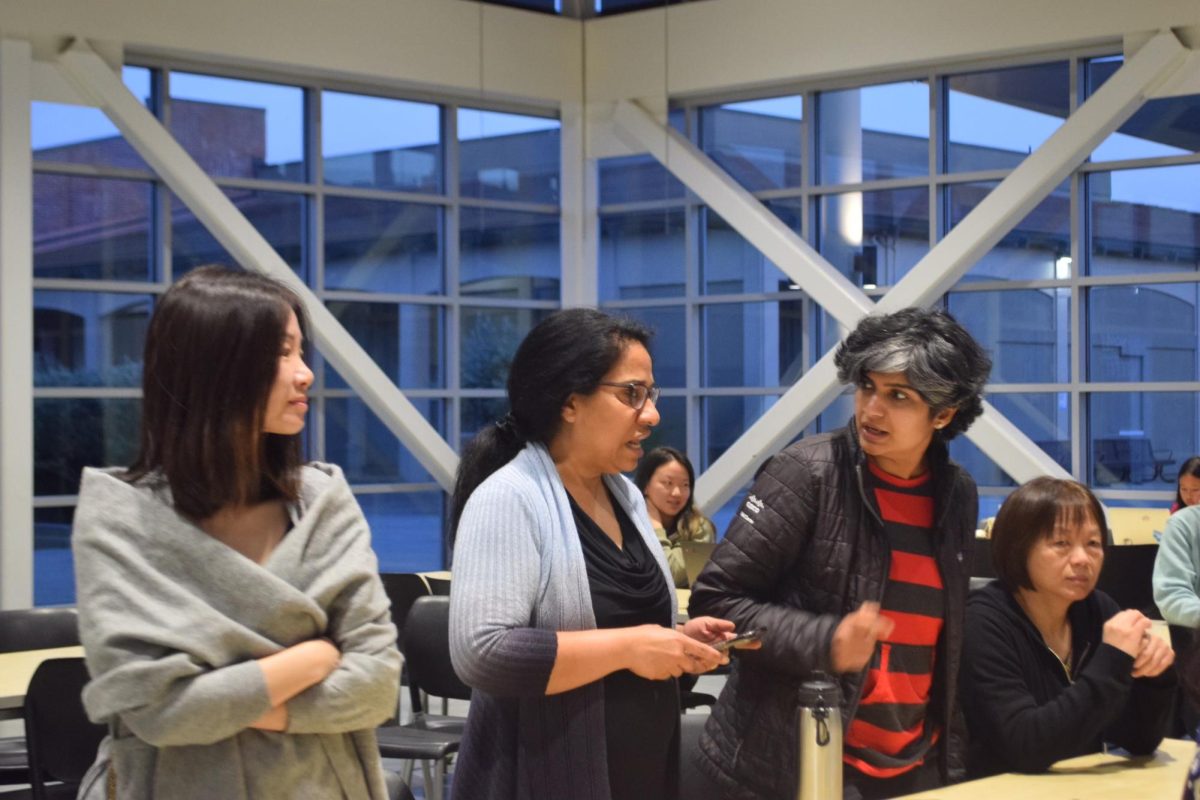Shuang Huang is a traditional Chinese performing art that involves two people who act out a story together. The actor sits in front and pretends to talk while the speaker hides in the back and talks to the audience. To the audience, it would appear that there is only one person talking.
On Monday, April 4, four students who are native Chinese speakers in Chinese teacher I-Chu Chang’s AP Chinese class were assigned a two-week long project — performing Shuang Huang on April 22. These four students choose to study Chinese literature rather than Chinese as a foreign language in their AP Chinese class, since Chinese is already their mother tongue. Chang usually gives them different content to work on, and this time, their task is to learn about Shuang Huang and perform it in front of all the students.
Chang believes that Shuang Huang conveys some critical techniques of learning Chinese.
“One of the hardest parts of learning a new language is to speak with facial expression,” Chang said. “In addition, performing Shuang Huang encourages the performers to thoroughly [understand] content to ensure that the actor mouths the correct word at the same time the speaker says it.”
Since the two students will not be able to communicate with each other in any way during the actual performance, they will have to work hard on cooperation. They not only need to know their lines by heart, but also have to agree on a pace to be able to predict each other’s movement in the performance.
Although Shuang Huang is only performed by native Chinese speakers, Chang believes that it is a great chance to convey the art of Chinese language in an alternative form. The amusing nature of the art will also add humor to the class.
The four students were split into two groups,and each group is given a word bank to create a script for the performance. When sophomore Kcee Yang was working on the script with her partner sophomore Samantha Au, she noticed some difficulties.
“It is harder than we think, because we have to convey a serious topic like being eco-friendly, meanwhile we need to keep a sense of humor in Shuang Huang,” Yang said.
Yang and Au have thought of a potential idea to reinforce the humorous element in their act. They propose that before they go into the formal stage of Shuang Huang, they will use crosstalk, a form of traditional Chinese comedy featuring jokes, to give context for the story.
“Since we are going to put a chair in the center of the room, we can do it less awkwardly by embedding the action in the story,” Au said.
Although both Yang and Au are relatively familiar with Chinese culture, they knew few things about Shuang Huang before they are assigned the task. Yang only knew that it was really popular and had a long history, and Au had never heard of Shuang Huang in her life.
Chang is surprised by the students’ lack of exposure to Shuang Huang, but she understands that when there are so many art forms being popular among Chinese youth, traditional arts like Shuang Huang are thus less appreciated.
“This makes the project more challenging,” Chang said. “But I have will two videos of Shuang Huang performances to implement my explanations to give the students an general idea.”
In the future, Chang wants to try to assign Shuang Huang to lower Chinese classes with easier dialogue to help students improve in incorporating facial expression during speeches.








